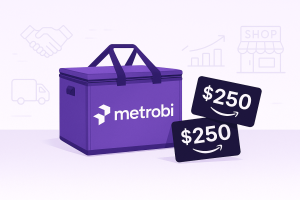Small business owners, we need to talk about wholesale. Specifically, how to sell wholesale effectively. Not the standard wholesale definition or simple wholesale meaning you’ll find in textbooks, but the real-world version that could transform your business this year, especially if you deal in wholesale products.
In 2025, wholesale isn’t just about buying in bulk anymore. It’s about strategic positioning within the complex supply chain. Understanding the wholesale definition in practice is key.
I’ve seen businesses fail because they misunderstood the fundamentals of how does wholesale work. One client thought wholesale simply meant “discounted prices” until her profit margins disappeared completely. A classic pitfall in the wholesale industry.
The traditional business model where wholesalers buy goods from manufacturers and sell to retailers still exists, but the rules have changed dramatically. Even merchant wholesalers are adapting.
Here’s a hard truth: If your wholesale strategy hasn’t evolved since 2023, you’re already behind. Your competitors, perhaps other wholesalers or innovative retail businesses, are adapting while you’re standing still.
Think about this: Are you still approaching wholesale involves selling products simply as ‘selling goods in bulk at lower price points, often requiring a minimum order quantity’?
The secret to making wholesale work successfully in 2025 isn’t just about large volumes—it’s about building strong relationships with manufacturers, distributors, and retailers, mastering pricing psychology (understanding the difference from retail prices), and integrating technology. It’s about understanding the subtle differences between wholesale and retail that most wholesalers (and retailers!) often overlook when dealing with bulk orders.
Ready to learn what the wholesale industry, including key players like wholesale distributors, really demands in today’s economy? This isn’t just another textbook wholesale definition—it’s your roadmap to sustainable growth, whether you handle imported goods or goods where the crops originated locally.
Metrobi drivers are rated 4.97/5
Trusted by local businesses for:
- Background-checked professionals
- Specialized in business deliveries
- Same drivers for consistency
- 4.97/5 average delivery rating
How to Master Wholesale Business Strategies in 2025
Learn the core aspects of the wholesale model
Adopt effective strategies for small businesses
Embrace the digital transformation in wholesale
Understanding today’s wholesale model and how does wholesale work
Today’s wholesale market focuses heavily on bulk selling to retailers. This involves selling large quantities of products directly from manufacturers or distributors. It helps smooth out the supply chain process by getting products efficiently from the source to retailers.
Understanding this model is crucial. The first step in grasping it is to know the characteristics of wholesale businesses. Wholesalers act as the bridge between the producer and the consumer. They typically buy large quantities directly from producers and sell in smaller quantities to retailers or other businesses. This ensures a continuous, streamlined flow of goods from production to purchase, which is essential for maintaining a strong supply chain.
The role of wholesalers is not static. Businesses in this space must stay responsive to changes in demand. Adapting to emerging technologies and shifts in consumer behavior is more important than ever. As Eric Pearson puts it, “It’s no longer the big beating the small, but the fast beating the slow.”
Top strategies for small businesses to sell wholesale
For small businesses, mastering wholesale strategies involves several key steps:
Building strong supplier relationships: This is foundational. Trust and reliability between you and your suppliers improve product availability and pricing flexibility. Regular communication and mutually beneficial agreements are key.
Adapting to changes in market demand: Stay aware of trends and shifts in consumer preferences. This might involve quick responses to eco-friendly product trends or adjustments in inventory for seasonal changes.
Implementing technology for inventory management: Use tools that allow you to track stock levels in real time. This reduces waste and overstock, saving money and space. Inventory software also helps forecast demand, assisting in better decision-making.
Operational Integration: 76% of businesses integrate ERP systems with eCommerce platforms for seamless operations and better data management.
Small businesses must employ these strategies to remain competitive in a rapidly evolving market. By understanding the fundamentals of wholesale distribution, you can unlock new avenues for growth and scalability. The right wholesale distribution strategy not only enhances your reach but also establishes a strong foundation for your local business to flourish in today’s market dynamics. For more insights on this topic, check out our post on how wholesale distribution can enhance your local business.
Addressing sustainability
Increasingly, sustainability is becoming an integral part of business strategies. Wholesalers are being pushed toward eco-friendly and renewable offerings. Meeting this demand can distinguish a business in the market. To support these sustainability initiatives, small businesses should consider seeking out reliable suppliers. Finding the right sources of products for small businesses is crucial in building a competitive advantage while maintaining eco-friendly practices.
Sustainability Demand: 64% of buyers prefer vendors with sustainable practices, indicating the growing importance of sustainability in B2B transactions.
Adapting to digital shifts
Digital transformation has reshaped the wholesale landscape.
E-commerce Integration: Incorporating online platforms in your business model is crucial. This allows you to reach a broader audience, streamline transactions, and provide better customer service.
Automated Solutions: These can enhance efficiency throughout your operations. Automation helps manage orders, process transactions, and track metrics without manual intervention, saving time and reducing errors.
Use of Analytics to Predict Trends: Data analytics provide insights into customer behavior and market trends. They help you anticipate demand and make informed decisions about inventory and sales strategies.
Online Origins & Digital Dominance: 93% of buyers start their purchasing journey online. By 2025, 80% of B2B sales interactions between suppliers and buyers will occur in digital channels.
As Warren Buffett highlights, “Digital Transformation is a fundamental reality for businesses today.” Items such as mobile technology and personalized experiences are especially crucial in adapting to the digital world. These tools don’t just streamline internal operations, but also improve interactions with customers, making the buying process smoother and more engaging.
Mobile Optimization: 65% of B2B sites offer mobile-first experiences, optimizing for buyers who shop on the go.
By sustaining these digital and operational practices, small businesses can excel in the wholesale market. They position themselves not just to survive, but to thrive in 2025 and beyond.
The Importance of Wholesale Pricing for Small Business Success
Strong wholesale pricing affects profits and growth.
Pricing impacts sales strategies and business goals.
Wholesale pricing helps align with future trends.
Key factors affecting wholesale pricing and the wholesale definition
What does it mean when a company is wholesale? At its core, wholesale involves selling goods in large quantities, usually to retailers, at a lower price. This approach allows wholesalers to move significant volumes quickly.
Cost of goods and production
Wholesale pricing starts with knowing production costs. This includes raw materials, labor, and overhead. Keeping these costs low can help set a competitive price. New tech and lean manufacturing approaches are helping here. Businesses are seeing that keeping costs down is critical.
Competitive market analysis
Analyzing competitors and the broader market is key. Knowing the going rate can influence pricing strategies, providing chances to adjust prices to be attractive yet profitable. The Producer Price Index’s recent dip shows easing wholesale inflation, which can provide new pricing strategies. Keeping an eye on the competition can give an edge.
Supply chain dynamics
Effective supply chain management reduces costs and stabilizes pricing. Disruptions can spike costs, hurting competitiveness. Wholesale electricity price fluctuations show how market factors affect supply chain-linked costs. Businesses need robust strategies to handle these challenges, ensuring stable operations.
Logistics Impact: 25% reduction in emissions can be achieved through digital logistics, optimizing supply chains to lower environmental impact.
Setting the right price for profit and growth using wholesale terms
How do small businesses balance competitive pricing and profitability?
Break-even and markup calculations
To ensure profitability, businesses must know their break-even points and apply markups for desired profit margins.
Balancing competitive pricing and profitability
Competitive pricing impacts perceived value and market standing. It’s about finding the sweet spot between pricing and margins. In volatile markets, like with electricity prices, keeping current with price analyses helps devise adaptive strategies to maintain profitable operations.
Impact of volume discounts
Volume discounts can attract bulk buyers, increasing turnover. They boost cash flow and inventory movement, benefiting both parties. Aligning discounts to the business’s financial roadmap keeps these strategies manageable. As shown by sales growth in small businesses, even small year-over-year changes in volume can lead to meaningful financial shifts.
Aligning pricing with business goals
Can a normal person buy from a wholesaler? While wholesalers traditionally sell to other businesses, more consumers are accessing wholesale options for personal use, expanding the market.
Choosing between fixed and flexible pricing models
Fixed pricing offers predictability; flexible models offer adaptability. Wholesalers need to evaluate which suits their operational goals better. Trends in technologies like AI help create more refined approaches for either choice. Deciding the right path depends on business type, market position, and customer base.
Recognizing market opportunities
Analyzing shifts, like increases in urbanization or technological breakthroughs, helps identify pricing opportunities. As shown by economic growth in regions like Florida and Wisconsin, being first to market with adjusted pricing can significantly impact success.
Planning for long-term sustainability
Wholesale strategies must adapt for future market changes. Prioritizing sustainable practices not only aligns with trends but also secures future business viability. Focuses include tapping into markets that favor green practices and implementing eco-friendly technologies and methods.
Green Premiums: 20% of buyers are willing to pay more for sustainable products, highlighting the potential for higher margins through green initiatives.
Comparing Wholesale vs Retail for Small Businesses and Retail Stores
Wholesale means selling products in bulk for a lower price, while retail focuses on individual sales at higher prices.
Wholesale usually requires more products sold, impacting cash flow and inventory differently than retail.
Power dynamics differ; wholesalers have more influence on pricing due to large orders, whereas retailers focus on consumer demand.
Fundamental differences and benefits
Understanding these differences helps. Wholesale involves selling in large quantities, reducing the cost per unit. Retail sells individual units at a higher price, aiming for a higher profit margin.
Volume of sales vs unit sales
Wholesale deals with sizable quantities. This reduces logistics but limits control over pricing. Retail focuses on individual unit sales, giving control over pricing and direct consumer insights. Wholesale generates revenue rapidly, but retail often yields a higher profit per unit sold.
Impact on cash flow and inventory
Cash flow management is more crucial in retail. Retailers pay upfront and wait for sales revenue. In wholesale, income arrives faster but requires greater initial investment. Wholesalers may experience fewer but larger transactions, impacting cash flow differently.
Balance of buyer and seller power for Merchant Wholesalers
Wholesalers influence pricing due to bulk sales. They can negotiate better terms with suppliers. Retailers, conversely, rely on consumer trends. Retail pricing often adapts to customer demands, offering less control but potential for higher profits per item.
How to identify the right business model
Choosing between wholesale and retail affects long-term strategy. Evaluate market needs, strengths, and potential transitions.
Assessing market needs and preferences
Understanding what customers want is crucial. If your market prefers bulk buying, wholesale might be better. Retail works best when customers seek product variety or unique items.
Evaluating resource availability and strengths
A business’s resources dictate its path. Wholesale needs robust supply chains and storage. Retail demands a strong customer engagement strategy and adaptability to trends.
Strategies for transitioning between models
Switching from wholesale to retail, or vice versa, requires understanding both models. A flexible approach can provide growth opportunities.
Remember, “Revenue is vanity, profit is sanity, but cash is king.” This underlines the need for strong cash flow management, whether choosing wholesale or retail.
Understanding these nuances provides a foundation for deciding the best path for your business.
Future Trends in the Wholesale Industry and What They Mean for Small Businesses
Sustainability is becoming crucial for winning over eco-conscious buyers.
Technology helps predict demand, making inventory smarter.
Keep an eye on trade rules to uncover growth in new areas.
Rise of sustainability and ethical sourcing
In the past year, sustainable practices have moved from nice-to-have to a must-have for businesses. Companies are no longer simply adding green initiatives; they are embedding them into their core strategies. This reflects a global shift toward more ethical sourcing, driven partly by heightened environmental awareness and pressure from consumers.
Partner Priorities: 41% of businesses seek carbon-neutral partners, prioritizing vendors aligned with their sustainability goals.
Small businesses can benefit immensely. By using sustainable materials and eco-friendly processes, they not only align with buyer demands but also differentiate themselves in a crowded market. Moreover, adopting such practices often results in a smaller carbon footprint, which can open doors to government incentives or partnerships with larger eco-focused corporations. To cater to these conscious consumers, businesses need transparent communication about their sustainability efforts, allowing them to build trust and credibility.
However, there might be initial cost implications. Shifting to ethical sourcing can sometimes increase upfront costs, as seen in several case studies from the latter half of 2024. Yet, the long-term benefits often outweigh these costs.
How to cater to conscious consumers
Consumers today are keener than ever to know the story behind their purchases. They want assurances that products are sourced and manufactured in a socially and environmentally responsible way. Businesses should focus on the transparency of their supply chains. By sharing this journey through creative storytelling and digital avenues like social media, small businesses can engage directly with their audience and build deeper connections.
Eco Friendly Practices: 30% of B2B companies have adopted eco-friendly packaging to appeal to environmentally conscious buyers.
Despite the potentially higher costs associated with sustainable practices, the rise in demand provides avenues to recover investments. By 2025, businesses focusing on such practices have observed enhanced customer loyalty. If businesses can clearly communicate the value of these efforts, consumers are likely to accept and understand possible price shifts in items developed through sustainable avenues.
The increasing role of technology and innovation
Technology’s role in wholesale markets has become more pronounced, further transforming the landscape. Predictive analytics is gaining ground as a tool for understanding consumer patterns. This helps businesses forecast demand efficiently, aligning their production cycles and inventory strategies more effectively.
High Value Digital Sales: 35% of B2B decision-makers are willing to spend over $500,000 through remote channels.
Collaborating with tech companies can further spur innovation. Technology partnerships have proven invaluable in the creation of customized solutions. A standout example in 2024 was a manufacturer collaborating with a tech startup to develop a real-time demand prediction platform.
Experience Expectations: 68% of buyers expect an Amazon-like experience in B2B transactions.
AI is another game-changer, especially in personalized selling. AI-powered chatbots and recommendation engines are becoming a regular feature in B2B and wholesale arenas. By providing tailored recommendations based on buyer history, businesses can enhance customer interaction and drive sales. With these insights, businesses have witnessed significant gains in customer satisfaction and retention rates over the last year.
Embracing AI for personalized selling
AI tools are more accessible and affordable than ever for small businesses. These technologies can seamlessly integrate with existing systems, allowing for effective data mining and customer interaction optimization. With AI, a business can provide tailored product recommendations even before the customer thinks about their next purchase, capturing interest and enhancing the buying experience.
AI Adoption: 87% of B2B companies use AI in their eCommerce platforms to personalize experiences and improve recommendations.
Predictive analytics and AI should be considered for any small business looking to enhance its capability in understanding market demands.
Real-time insights and personalized selling are no longer supplemental; they’re essential. For those keen on capitalizing on this trend, the priority should be to invest in scalable and adaptable tech solutions that can grow alongside their business needs.
Navigating global market shifts
The global trade landscape is evolving rapidly. In 2024, the introduction of new trade agreements led to shifts in import-export dynamics, impacting pricing strategies. These changes have expanded opportunities in emerging markets, which are seeing notable growth in middle-class spending.
Currency fluctuations have also been pivotal. In 2024, significant fluctuations were observed, particularly for businesses operating across multiple regions. This volatility requires businesses to stay alert and agile, adjusting pricing strategies swiftly to protect margins. Engaging with financial experts for strategic planning around currency risks can provide some stability in uncertain times.
Emerging markets are promising. Aligning with regional partners can facilitate entry and growth in these markets, enabling businesses to capture a share of the rising consumer demand. Insightful market research should guide these efforts, highlighting cultures, pricing sensitivities, and logistical considerations.
Currency fluctuations and pricing
Keeping an eye on currency shifts is crucial for maintaining stable pricing strategies. Small businesses should adopt dynamic and flexible pricing models to absorb such shocks. Developing strategies to hedge against currency risks can help maintain a competitive edge while mitigating potential financial setbacks.
In summary, the wholesale landscape is transforming. For small businesses, staying ahead requires adopting sustainable practices, leveraging technology, and strategically navigating global markets. Equipped with the right insights and tools, businesses can turn these trends into opportunities.
Conclusion
When you understand how wholesalers buy goods and sell them, whether you operate as a wholesaler or buy from one, you gain a business edge that opens doors to bigger profit margins and steady growth. The wholesale landscape in 2025 demands more than just buying in bulk or processing bulk orders; sometimes flexibility with smaller quantities is needed. Operating on a large scale often means offering a discounted rate, but requires strategic pricing (considering eventual retail prices), strong relationships with suppliers like manufacturers and distributors across the supply chain, efficient managing inventory, and smart technology use. Many wholesalers find relationships the cornerstone of their success.
As a small business owner, your success hinges on balancing the wholesale-retail equation (especially vital for retail businesses aiming to reach the end consumer or end user, often bypassing direct sales to individual consumers), whether selling to retail stores or managing your own ecommerce site, while keeping an eye on emerging trends. Even a company wholesales clothing needs to track fashion and sustainability trends. The businesses that thrive will be those that adapt quickly to market shifts, staying ahead of other wholesalers, and embrace innovation through focused marketing efforts. In the realm of wholesale and logistics, efficient delivery services play a crucial role in maintaining smooth operations and customer satisfaction. For businesses operating in the Boston area, partnering with reliable Metrobi Boston couriers can ensure timely and secure deliveries, enhancing overall supply chain performance. Learn more about how professional courier services can support your wholesale distribution by exploring the advantages of trusted Boston couriers.
Whether you’re just starting to sell wholesale or looking to improve existing operations, remember that knowledge is only valuable when put into action. Take one concept from this guide—perhaps improving your pricing strategy, clarifying your wholesale terms, exploring sustainable sourcing (maybe even looking at where your crops originated if you’re working with wholesale growers, or the specifics of imported goods) —and implement it this week. Remember, even though the retailer sells to the final consumers or individual customers, your role in providing wholesale products efficiently is crucial. For small businesses handling wholesale goods, timely and reliable delivery is essential. Partnering with specialized local services like New York City courier services can ensure your products reach retailers swiftly, maintaining supply chain efficiency and customer satisfaction.
The wholesale world, increasingly integrated with B2B sales platforms, rewards those who stay informed and nimble. Your business deserves the advantages that come with mastering these concepts. What wholesale strategy will you adopt first to transform your business in 2025?
The future of your small business begins with the decisions you make today. Make them count.














